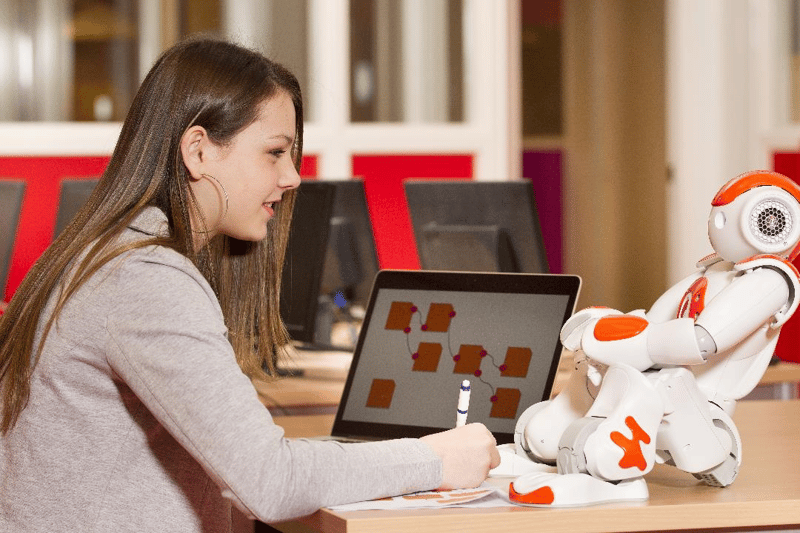There's no doubt that this is the digital age. As the modern office evolved, technology has continued to play an increasing role in how we work. Productivity growth has resulted.
Today there is much talk - and debate - about office automation. How will automation affect humans in the workplace of the future? Will artificial intelligence replace or augment our ability to work or replace us entirely? Plenty of voices chime in the conversation from both sides of the debate, but overall, the ability of humans and robots to work together looks bright.
The Human Touch - Literally
The most important difference between a human worker and technology is a big one: relationships. Smiles, skin to skin contact and emotional connections are basic human needs. In fact, it goes a bit deeper than that; unlike humans, machines
- Can't evaluate sentiment. They will never be able to understand the importance or symbolism of anything to another human being.
- Lack the instinct to determine emotions. Today we enjoy robots that reflect human facial expressions, mostly because they do so poorly and comically. They won't ever get the joke or cry real tears with someone. They can't read body language or between the lines.
- Lack the insight needed to decipher the meanings behind sarcasm or read deeper into text
- Are not equipped to handle all the variances of language—the quips and tones of the speaker or written word
- Will never understand the other person's irrational point of view
These skills are still vitally necessary in the workplace. And even more vital in the marketplace. Machines can't interact between disgruntled employees as mediator. They could offer fortune cookie advice, but when it really matters, it's a human's ability to process each person's individual make up and see things from different perspectives that is most needed.

So Happy Together
Imagine me and you, and you and me; No matter how they rolled the dice, it had to be
Who knew The Turtles were singing about the turn of the century office? Because plenty of good things happen when robots and humans work together:
- Robots increase productivity in a way humans can't. They don't get distracted, they don't need sustenance and they don't get tired. Productivity creates growth, which will create entirely new jobs for humans.
- Automation can fill in on repetitive and physical work which creates new opportunities and offers new skills for workers
- Machines are indifferent to working in inexpensive geographies. This will make the world's real estate usage more efficient while saving organizations money.
So What Does the Future Hold?
While automation won't eliminate the need for a human workforce, it will impact many industries and career paths. Just how much that impact will be is dependent on the type of job it is. When it comes time for an employer to determine whether they need humans versus machines to complete a set of tasks, many factors come into play:
- Technical feasibility. Technology is best at repetitive and formulaic jobs.
- The cost of developing and deploying the automation. Off-the-shelf equipment will be much more cost efficient that proprietary hardware/software tools.
- The cost of human labor and availability of the necessary skills
- The physicality of the work and the production level needed
We've already began to see some of the benefits machines have beyond labor substitution and productivity. In some occupations, like grocery store self checkout or fast food cashier kiosks, the use of automation increased the need for human workers. There are plenty of jobs a machine will never be able to integrate because they require a human touch, like nursing. Dosing medication and performing basic tasks doesn't require human interaction, but that gentle reassurance, a soft comforting pat on a shoulder or a live body fluffing a pillow does. On the other hand, industries such as restaurants and manufacturing may be more worrisome due to the more physical type of work, but as long as the rate of pay remains low, it will always be cheaper to employ a human over an expensive machine.
Summary - Long Live the Human/Robot Partnership
All in all, the future of humans and machines boils down to working together for a better world. Machines can take over the physical, boring tasks like. For example, free up the office manager from reception duties with a check in app that runs 24/7. Instead, have her work on jobs that require the insight and emotional touch the real world needs.